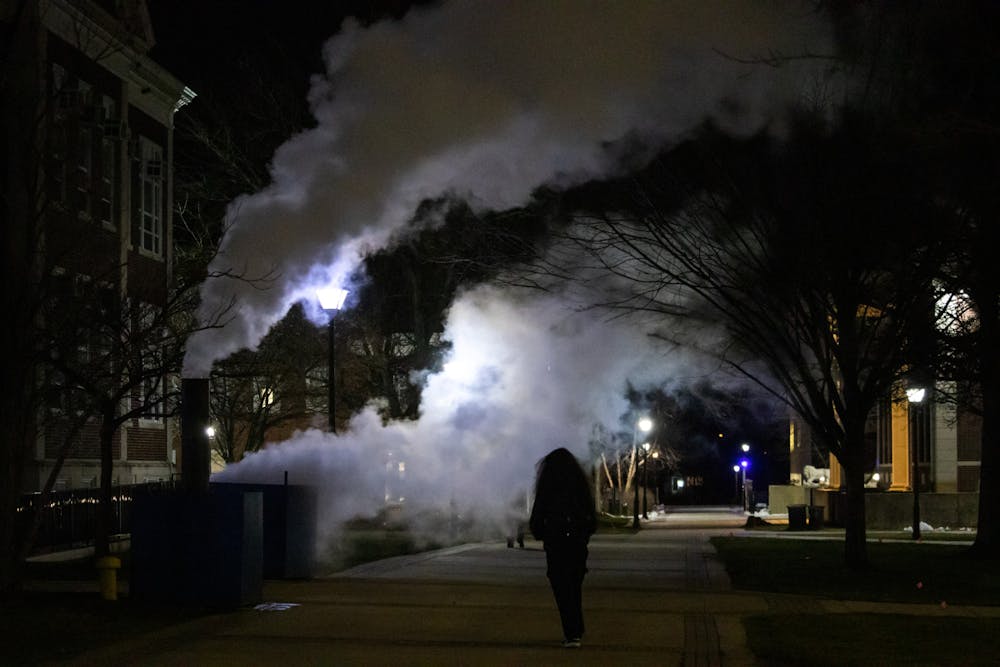By Olivia Consuelo Ramos
Correspondent
Emily Bielksi was walking back from class on a foggy night when she had even more difficulty navigating her way because a small plume of steam obscured her view.
“I haven’t really had any issues with them, but sometimes they can make it hard to see, especially when it’s already foggy out,” said the freshman music and psychology major.
Underground steam pipe systems are used to transport hot water that brings heating and cool air to building units on campus, with the exception of Campus Town. On campus, there are a variety of structures, including manholes, sewer grates and machines with prominent pipes that release visible steam into the air, especially during winter when the temperature is cold. Many are located next to pathways alongside campus buildings.
The steam has caused some confusion among students, and some are curious as to why the steam is being released in this manner.
The Central Steam Plant is a part of the Department of Sustainability & Energy. The department produces the campus’s fuel, electricity, power and steam, as well as directing construction projects that are made to sustain and use energy sparingly.
There are a few reasons to explain why the pipes on campus release steam. One of them is that when small amounts of steam are released, they’re controlled through steam traps underground. Groundwater comes into contact with hot pipes, which escape through small holes in the smaller pipes, manholes and sewer grates.
“Typically, when we see small whiffs of steam from the yellow mushroom shaped vents, these are controlled releases from steam traps in the vaults below the ground,” said Paul Romano, senior director of sustainability and energy management. “When we see larger releases of steam, this is more likely groundwater coming into contact with our very high temperature pipes, which produces steam upon contact.”
In addition, when kinks in the trap system cause defects in the pipes, large amounts of steam are released. This is especially common in the larger machines that were made to release steam in a controlled manner. Two of these machines are located near Green Hall and another is located behind the library. These machines most likely have defective components that have failed and allow big plumes of steam to be released, such as one near the left side of Green Hall.
Jess Hausman, a freshman psychology major, said she is more concerned with the danger of the steam and its possible toxicity. “I have no idea what kind of toxic fumes could be in there if there are any,” she said.
However, Romano said the steam is not hazardous, and measures are taken to contain the heat that large amounts of steam contain. “The release of steam in large volumes presents a safety hazard if someone were to come into contact, which is why we install the large steel funnels on campus so that the energy may dissipate to the environment and erect wooden barriers so that no one may come into contact with the funnel,” he said.
Surveys are taken of the components in the steam system to expand reasonably, but when defects occur, they are difficult to predict. The hardest issue lies in replacing and rebuilding the pipe system. This is a lengthy process that is expensive and time consuming. It requires more time because the steam system must be turned off, but this may cause disruptions to those living on campus.
The steam system is eighty years old and has been expanded upon for almost a dozen years to be more efficient. “To date, we have replaced nearly two-thirds of the piping, but as this is both a very disruptive and expensive effort, this work is being performed in phases,” said Romano.







